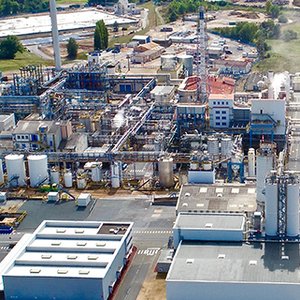The first Donau Soja Market Report in 2024 predicts that the soybean cultivation area in Europe could increase by up to 10% this year to 5.6 million hectares.
There are numerous drivers, such as the relatively high prices for soy, the increasing demand for plant proteins, or policy incentives within the EU. Soy already experienced a record harvest in Europe in 2023, with an increase of almost 24% to 12.2 million tonnes compared to the previous year.
In the EU alone, 3 million tonnes of soy were harvested in 2023, 740,000 tonnes more than in 2022, which is an increase of a third on the previous year. This trend is likely to continue in 2024 – subject to this year's weather conditions.
“The upward trend and the favorable forecast is a great opportunity for the food industry to switch to certified regional soy from Europe. The advantage for producers and consumers is that it is GMO-free and guarantees that certified European soy is deforestation-free and therefore also meets the criteria of the EU Deforestation Regulation (EUDR),” said Donau Soja president, Matthias Krön.
GMO-free soya comes mainly from Europe
The soy harvest began in Brazil in mid-January. In recent months, prices for GMO-free soy have been relatively low compared to genetically modified soy from Brazil. As a result, demand from conventionally producing companies for GMO-free soy was higher and companies that process GMO-free soy felt a shortage in the market.
The supply of GMO-free soy in the EU shows some seasonal trends. Until April, demand can be met with GMO-free soy from the EU, Serbia and Ukraine. From May onwards, more GMO-free soy from the last harvest in Brazil will be used. However, Brazil, as a whole, produces less GMO-free soy than the EU. For 2024, the Brazilian GMO-free production is estimated at only around 2 to a maximum of 2.5 million tonnes. A total of more than 150 million tonnes of soy are produced in Brazil. The overwhelming majority of the Brazilian harvest is still genetically engineered soy.
In the future, it will be important for the food industry that supply chains for soy meet the requirements of the EU Deforestation Regulation (EUDR). These should be completely deforestation-free from farm to fork. This regulation will come into full force at the end of December 2024. The final criteria are currently being defined.
“The strict standards of Donau Soja/Europe Soya already meet the criteria of the EU Deforestation Regulation as far as they are known until now. Compared to Brazilian soya, the Donau Soja and Europe Soya certification achieve a reduction of up to 90% CO2, compared to non-certified soy from Europe a reduction of around 40% CO2,” Donau Soja said.












